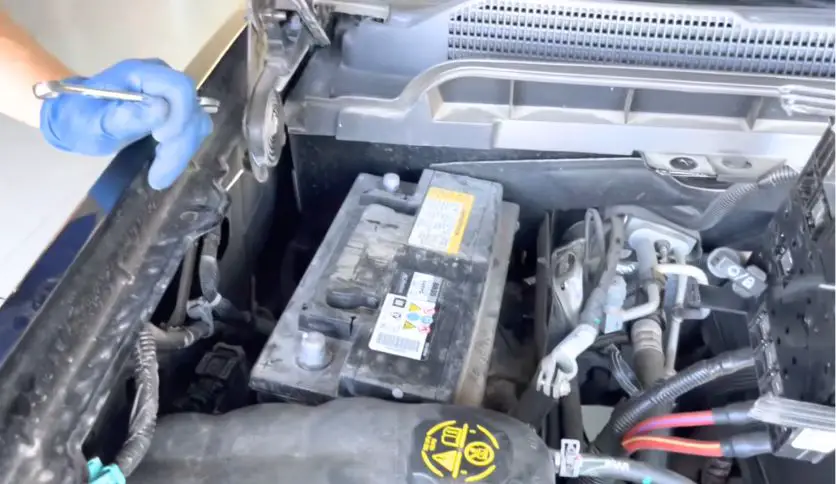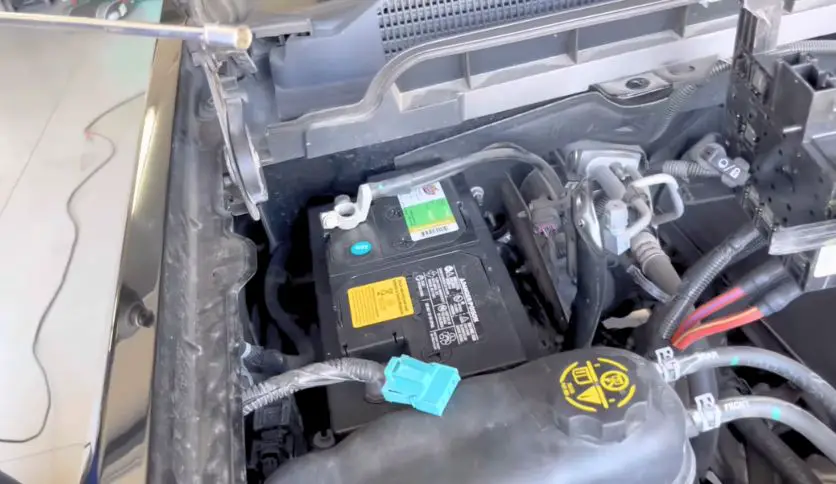Have you ever experienced that sinking feeling when you turn your key and instead of the roar of the engine, all you get is a series of clicks? It’s especially baffling when you’ve just put in a new battery, expecting that to solve all your start-up woes. Well, you’re not alone, and this guide is here to help you figure out why your trusty Silverado is playing hard to start.
Contents
Understanding the Problem
That clicking sound you hear is like a cry for help from your vehicle’s ignition system. It’s trying to tell you something, and with a little detective work, we can crack the case. The battery might be the heart of the start-up process, but it’s not the only player. Let’s dive in.
Battery-Related Issues
New Battery Installation Check:
First things first, let’s make sure that new battery is sitting pretty and Install a New Battery for Chevy Silverado. A loose connection can make for a weak handshake between your battery and the rest of the car. Tighten those terminals and ensure they’re free of corrosion.
Battery Charge Level:
Just because it’s new doesn’t mean it’s fully charged. Your battery could have been on the shelf for a bit, losing some of its juice. A quick voltage check can tell you if it’s got the power it needs to turn over the engine.
Starter Motor and Solenoid

When you slide into the driver’s seat of your Chevy Silverado, ready to start the day, the last thing you want is to be greeted by a series of clicks instead of the engine’s purr. This section is all about understanding two critical components under your hood: the starter motor and the solenoid. They’re the dynamic duo responsible for bringing your engine to life, and when there’s trouble, it’s usually because one (or both) of them is not up to par.
Starter Motor Functionality:
Think of the starter motor as the Silverado’s personal trainer. Its job is to get the engine’s gears moving, to “exercise” them into action. When you turn the key or push the start button, the starter motor springs into action, using electrical power from the battery to turn the engine over and begin the combustion process.
But what happens when all you get is a click? That’s the sound of the starter motor trying to engage, but it’s not getting enough power or it’s malfunctioning. It could be due to a faulty connection, a bad motor, or even a damaged gear. The single loud click you hear is like a call for help, signaling that the starter motor is unable to turn the engine over. This could be due to internal wear and tear, or it might be struggling with a lack of electrical current due to battery issues (even if it’s new, remember?).
Solenoid Issues:
Now, let’s talk about the solenoid. This is the starter motor’s sidekick, the Robin to its Batman. The solenoid’s main role is to take a small amount of current from the battery and use it to control a larger current that will operate the starter motor. When it’s working correctly, it’s a seamless handoff of power. But when it’s not, that’s when you hear the rapid clicking noise.
This rapid clicking is the sound of the solenoid trying to engage the starter motor but failing. It’s rapidly closing and opening the connection because it’s not getting enough power to keep the starter motor running. This could be due to a weak battery, poor connections, or the solenoid itself could be failing.
Both the starter motor and the solenoid are crucial for your Silverado’s ignition process. If either one is not working correctly, your truck won’t start. It’s like trying to run a marathon with a sprained ankle; no matter how much you will it, you’re not going to get very far.
If you’re handy with tools and have a bit of automotive know-how, you might be able to tackle these issues yourself. A multimeter can help you test the battery’s voltage and the starter motor’s continuity. If you’re not comfortable with DIY auto repair, though, it’s always best to consult with a professional mechanic. They can perform a thorough diagnosis and replace any faulty parts, ensuring that your Silverado is back in action without further ado.
Remember, your Silverado is built to be resilient and robust, but like any machine, it needs proper care and sometimes a bit of troubleshooting. By understanding the roles and potential issues of the starter motor and solenoid, you’re well on your way to ensuring that your truck is always ready to start your day off right.
Electrical System Checks
Circuit and Wiring Inspections: Wires are the Silverado’s veins, carrying the electrical lifeblood. A break or short in them can mean your electrical current is going nowhere. Give those wires a look-over for any signs of wear and tear.
Ignition Switch Problems: If your key turns but your car’s not starting, the ignition switch might be the silent culprit. It’s like the conductor of an orchestra – if it’s not working, the music stops. A professional can help you determine if this is the issue.
Engine and Mechanical Concerns
Engine Health:
An engine that’s not in tip-top shape can be a start-up party pooper. Even with a Won’t Start After New Battery, if the engine’s got issues, you’ll be going nowhere fast.
Fuel System Check:
No fuel, no start. It’s as simple as that. If your fuel pump or injectors are having a bad day, your engine won’t be starting up, no matter how new your battery is.
Diagnostic Approaches
Using Diagnostic Tools: Roll out the red carpet for the OBD-II scanner, the Sherlock Holmes of car diagnostics. This tool can give you the clues you need to figure out what’s going on under the hood.
Professional Inspection: Sometimes, you’ve got to call in the cavalry. If these tips haven’t solved the mystery, it’s time to visit your local mechanic. They’ve got the tools and the know-how to get to the bottom of it.
Conclusion
We’ve covered a lot of ground here, and I hope this guide has shed some light on the possible reasons your Silverado is giving you the silent treatment. Remember, take it step by step, and don’t be discouraged. Your Silverado is built tough, and with a little patience and some elbow grease, you’ll likely find the solution.

Hello, this is Wesley Shelton, currently working in a car restoration company for over 5 years. Before that, I was a worker at a small car repair shop. As I was a car freak from a young age and worked as a professional for over half a decade, I think I now know pretty much everything about every car and its parts. To establish my name as a professional and help others by sharing my knowledge, I’ve created this website, which I work on whenever I get free time. I hope you’ve enjoyed my informative blog!


